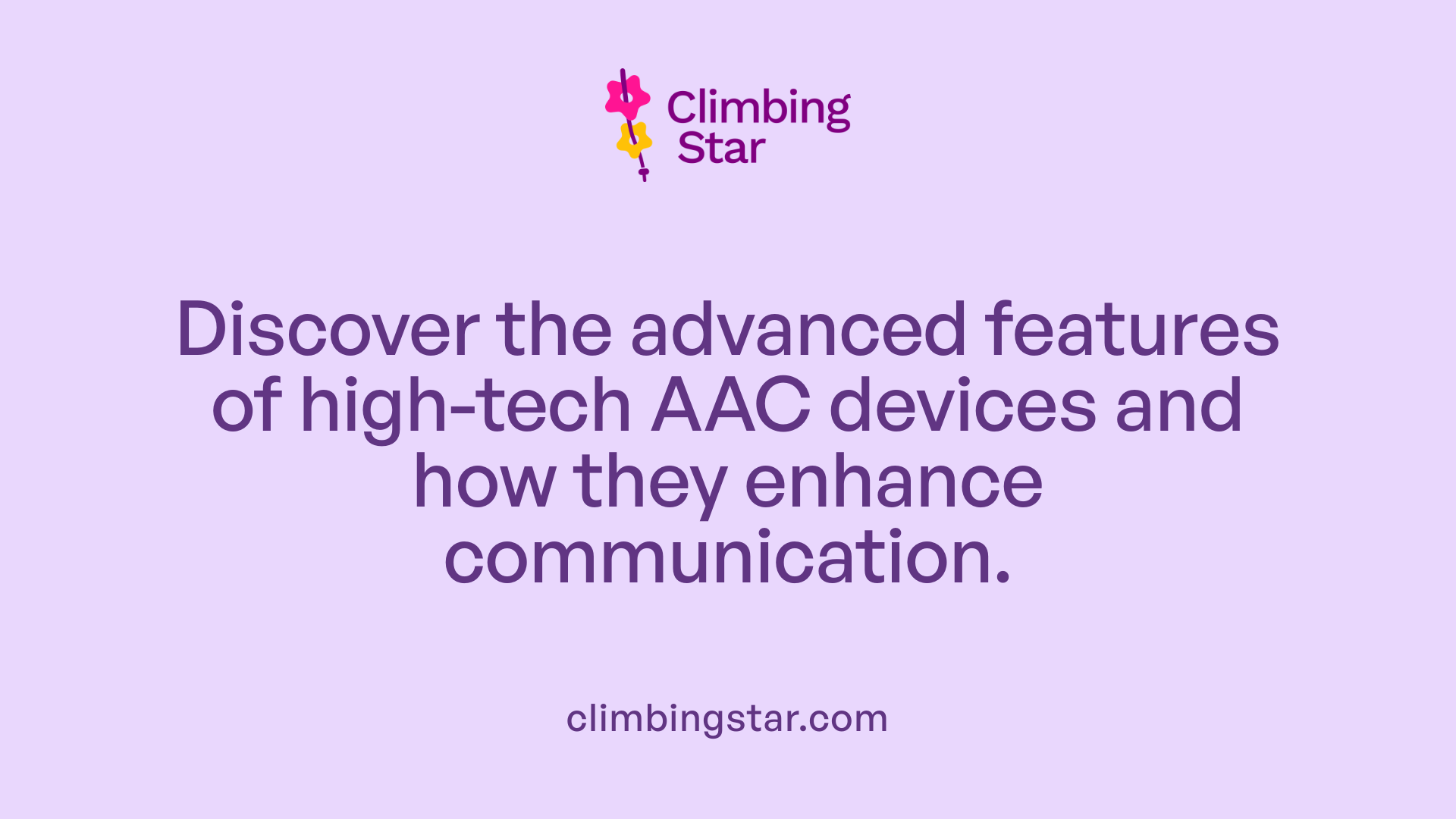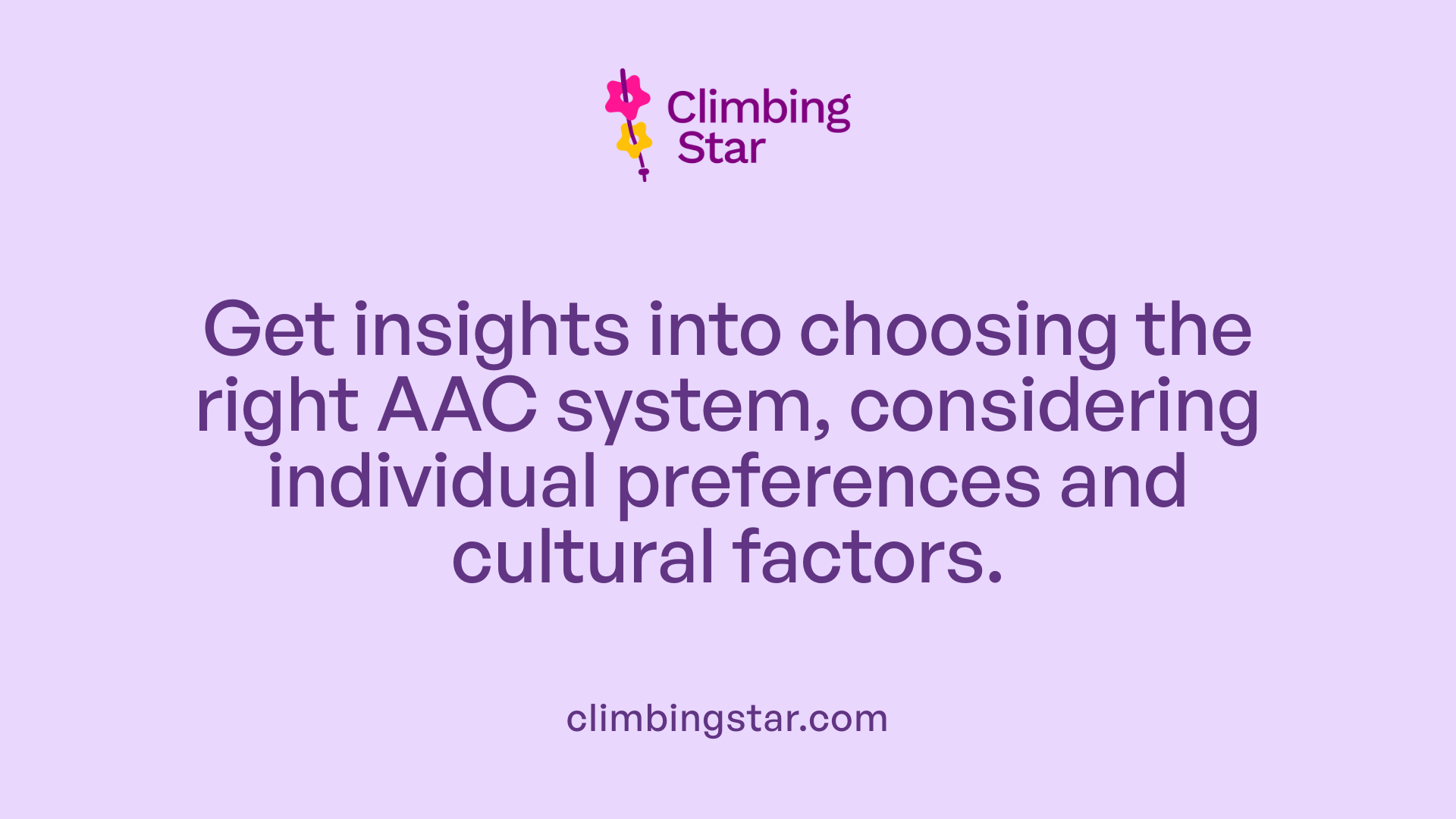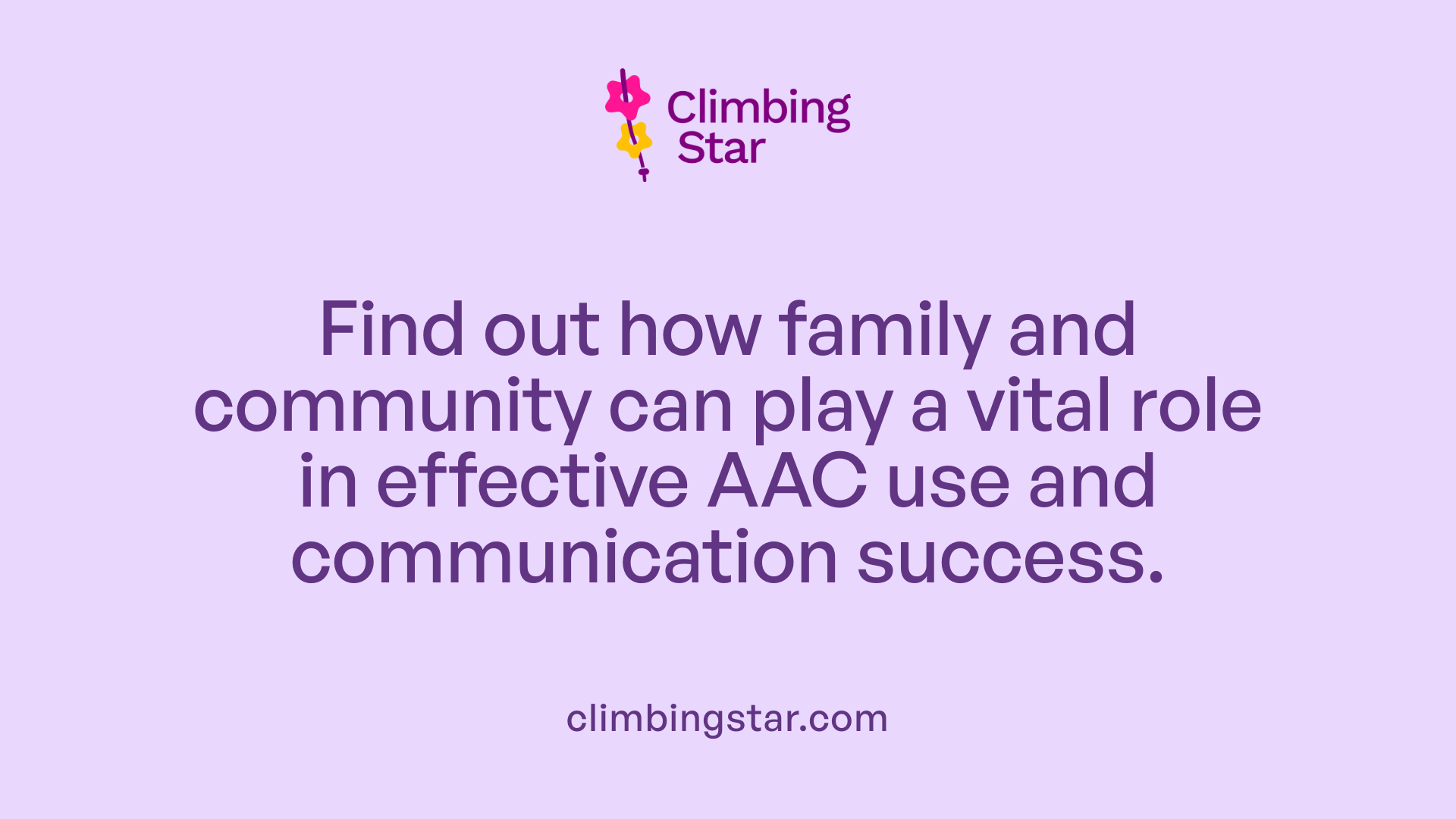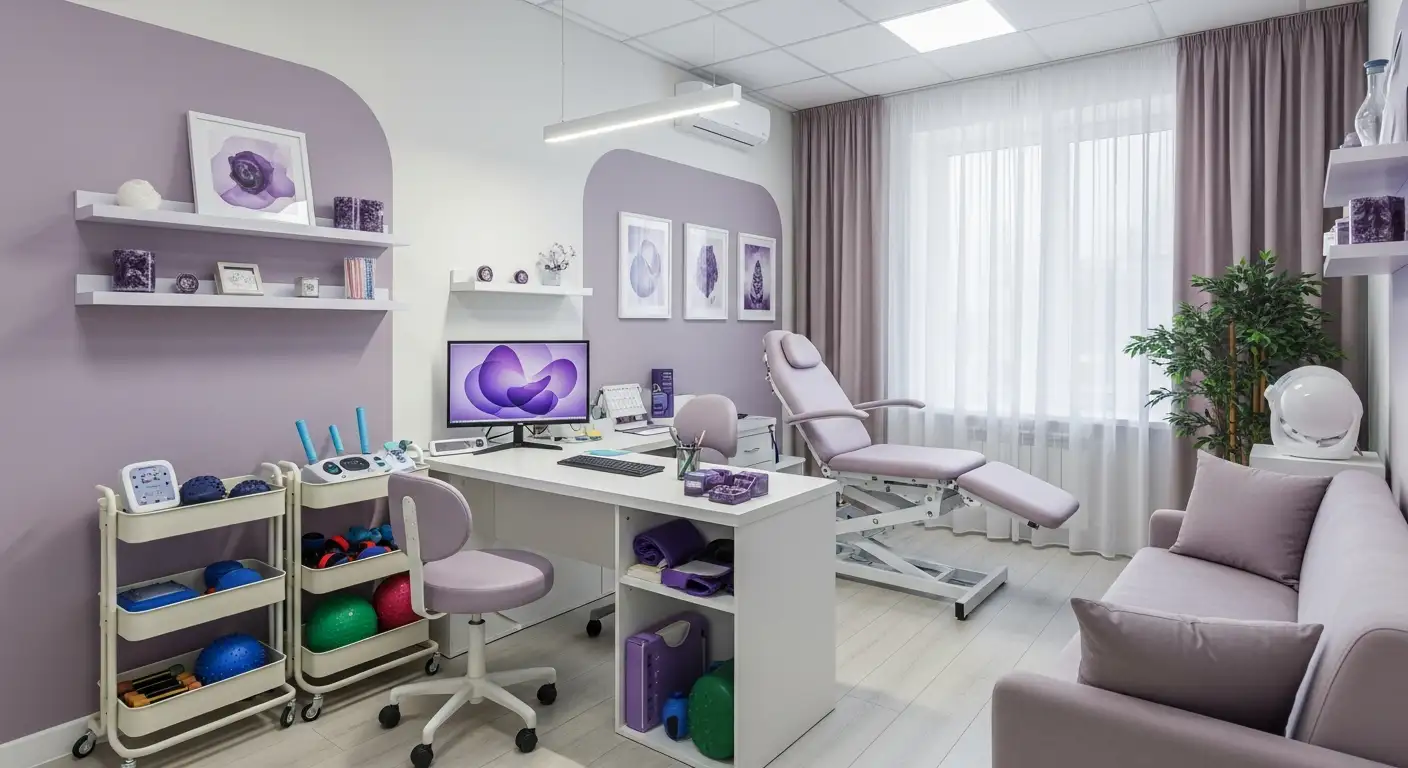Understanding AAC Devices in Autism Therapy
Augmentative and Alternative Communication (AAC) devices serve as essential tools for individuals with autism who face challenges with speech and verbal communication. By supplementing or replacing spoken language, these systems open pathways for expression, social interaction, and improved behavioral outcomes. This article explores what AAC devices are, how they integrate with behavioral therapies like Applied Behavior Analysis (ABA), and their impact on language development and quality of life for autistic individuals.
Defining AAC Devices and Their Varieties

What is an AAC device?
AAC (Augmentative and Alternative Communication) devices are essential tools designed to support individuals who face challenges with spoken communication. These devices help express emotions, needs, and thoughts effectively, enabling better interaction in social and therapeutic contexts.
Types of AAC: Unaided and Aided Systems
AAC can be broadly categorized into unaided and aided systems. Unaided methods rely solely on the user's body and include gestures, facial expressions, and sign language. Aided systems, on the other hand, utilize external tools or devices to assist communication.
Low-Tech vs. High-Tech AAC Devices
Aided AAC devices are further divided into low-tech and high-tech options. Low-tech AAC includes picture cards, communication boards, and core vocabulary boards. These are simple, often non-electronic, and affordable tools that can be highly effective in many settings.
High-tech AAC devices feature electronic components such as speech-generating tablets, alphabet-driven devices, and apps like Proloquo2Go and TouchChat. Advanced devices may incorporate features like eye-tracking or switch access, providing customizable interfaces to meet diverse user needs.
Examples of AAC Methods and Tools
- Unaided AAC: Sign language, gestures, facial expressions.
- Low-Tech AAC: Picture Exchange Communication System (PECS), communication boards, printed symbol sets.
- High-Tech AAC: Tablets with speech-generating applications (e.g., Proloquo2Go, LAMP Words for Life), dedicated devices from companies like Tobii Dynavox and PRC-Saltillo.
These diverse AAC options allow personalized communication strategies tailored to individual preferences and abilities, making communication more accessible and effective for people with speech difficulties or nonverbal conditions.
High-Tech AAC Solutions: Features and Benefits

What are examples of high-tech AAC devices and their features?
High-tech AAC devices represent advanced technological tools designed to support communication, particularly for individuals who are nonverbal or have significant speech difficulties. Examples include picture tablets, alphabet-driven devices, tactile symbol buttons, and visual scene displays. These tools provide dynamic and interactive ways to communicate beyond traditional speech.
Popular speech-generating devices and apps include Proloquo2Go and TouchChat, which offer extensive vocabularies and voice output options. Other leading platforms like LAMP Words for Life are built on motor learning principles to facilitate speech production.
Popular speech-generating devices and apps
- Proloquo2Go: Features a customizable interface and a robust symbol vocabulary. It supports voice output to verbalize user selections.
- TouchChat: Offers flexible vocabulary options and user-friendly navigation suited for diverse user needs.
- Tobii Dynavox: Known for integrating eye-tracking technology, providing an access solution for users with limited motor skills.
- LAMP Words for Life: Designed for neurological and motor planning, promoting natural language use.
Advanced features like eye-tracking and customizable interfaces
High-tech AAC devices boast advanced capabilities such as eye-tracking, switch access, and customizable interfaces. Eye-tracking technology from companies like Tobii Dynavox enables users with limited physical movement to control devices through gaze, significantly enhancing independence.
Customization allows users to tailor symbols, vocabulary sets, and interface layouts, reflecting individual preferences and cultural or linguistic needs. This personalization improves communication effectiveness by aligning the device with the user's environment and communication style.
Benefits for nonverbal and minimally verbal individuals
For nonverbal or minimally verbal individuals, especially children with autism, high-tech AAC devices reduce frustration by providing a reliable way to express needs and emotions. They facilitate participation in social interactions and behavioral therapies such as applied behavior analysis (ABA).
Research indicates that AAC use may encourage rather than inhibit speech development when introduced early and used consistently. High-tech devices empower users to engage more fully in their communities, improving overall quality of life.
| Device/App | Features | Benefits |
|---|---|---|
| Proloquo2Go | Voice output, customizable vocab | Enhances expressive communication |
| TouchChat | Flexible vocabulary, easy access | Supports diverse communication needs |
| Tobii Dynavox | Eye-tracking, switch access | Allows use by individuals with motor limitations |
| LAMP Words for Life | Motor planning-based design | Supports natural speech development |
The Role of AAC in Applied Behavior Analysis (ABA) Therapy
What is Applied Behavior Analysis (ABA) therapy and how is it used to help individuals with autism?
ABA therapy is a scientifically supported approach that utilizes learning and behavior principles, such as reinforcement, to assist individuals with autism in acquiring essential skills and decreasing challenging behaviors. Personalized ABA plans are crafted by certified professionals using strategies like Discrete Trial Training and naturalistic methods, targeting improvements in communication, social interactions, and adaptive daily skills.
Integration of AAC into ABA therapy
AAC devices are increasingly integrated into ABA therapy to enhance communication abilities of individuals who are nonverbal or minimally verbal. By incorporating AAC, therapists can provide more effective communication tools during behavioral interventions, allowing participants to express needs and emotions more clearly.
How AAC supports behavioral goals
AAC supports behavioral goals by empowering individuals to communicate functionally, thereby reducing frustration and challenging behaviors that arise from communication barriers. For example, using picture tablets or speech-generating devices within the ABA framework promotes functional communication, shaping more appropriate social responses and interactions.
Improving communication to reduce problematic behaviors
By improving means of expression through AAC, individuals can convey desires and feelings without resorting to problematic behaviors. This reduction in frustration and behavioral challenges aligns with ABA’s objective to reinforce positive communication and adapt behaviors.
Empathy and skills required by therapists using AAC in ABA
Therapists working with AAC in ABA settings require empathy, strong communication skills, and critical thinking abilities. Passion for innovation is essential to effectively customize AAC technology and ensure it meets individual needs, supporting successful therapy outcomes.
Integrating AAC into ABA therapy creates an inclusive environment that fosters communication development and behavioral improvements for people with autism.
Who Provides ABA Therapy and AAC Support?
Qualifications of ABA Providers
ABA therapy is primarily delivered by trained professionals such as Board Certified Behavior Analysts (BCBAs) and Registered Behavior Technicians (RBTs). BCBAs design, supervise, and adjust behavior intervention plans based on individual assessments, while RBTs carry out the day-to-day therapeutic activities under BCBA supervision.
Roles of BCBAs and RBTs
BCBAs bring expertise in applied behavior analysis principles and tailor interventions to promote communication and social skills. RBTs execute these plans, working directly with clients to implement strategies that help reduce challenging behaviors and increase adaptive communication.
Speech-Language Pathologists’ Involvement in AAC
Speech-language pathologists (SLPs) are critical in the evaluation, selection, and training of appropriate AAC systems. They assess motor skills, language abilities, sensory needs, and cultural preferences to recommend devices or methods that best support individual communication goals. SLPs also provide ongoing support and training for the user and caregivers to ensure effective AAC adoption.
The Importance of Training and Assessment
Proper assessment by BCBAs, RBTs, and SLPs ensures each therapy plan and AAC device matches the person's unique strengths and challenges. Training is essential—not only for professionals but also for families and educators—to promote consistent use and integration of AAC tools within natural environments, maximizing communication development and behavioral outcomes.
Effectiveness of AAC Devices in Promoting Speech and Communication

Impact on speech production
AAC devices play a significant role in encouraging speech production, particularly in children with autism who are nonverbal or minimally verbal. Contrary to some misconceptions, research shows that the use of AAC does not hinder speech development. Instead, it supports and enhances verbal communication by providing a functional means for expressing needs and emotions. Early and consistent use of AAC devices is linked to either stabilization or improvement in speech abilities.
Research findings on AAC and language development
A systematic review analyzing naturalistic developmental behavioral interventions (NDBIs) paired with AAC use found that incorporating AAC systems into NDBI procedures resulted in larger improvements in language skills compared to NDBI alone. This integration helps children on the autism spectrum with minimal speech experience better language outcomes, demonstrating the effectiveness of combining behavioral strategies with AAC technology.
Reducing frustration and challenging behaviors
AAC devices reduce frustration and challenging behaviors by offering nonverbal individuals an alternative way to communicate effectively. When individuals can express their needs and emotions using picture tablets, speech-generating devices, or low-tech communication boards, they are more likely to demonstrate appropriate behaviors. This direct communication access helps behavioral therapists and caregivers address needs promptly and reduce misunderstandings.
Early intervention and consistent use
The benefits of AAC are maximized when introduced early and used consistently within therapy and daily routines. Combining AAC with applied behavior analysis (ABA) therapy offers a comprehensive approach to enhancing communication skills while shaping appropriate behaviors. Professionals such as speech-language pathologists and Board Certified Behavior Analysts (BCBAs) play crucial roles in selecting appropriate AAC tools and training both individuals and caregivers to ensure effective implementation.
Relationship with ABA therapy outcomes
ABA therapy is well-supported by evidence for improving communication, social skills, and adaptive behaviors in individuals with autism. When integrated with AAC use, the positive effects on language development increase. AAC devices help minimally verbal children engage actively with their environment, offering meaningful opportunities to communicate that promote engagement and skill acquisition.
| Aspect | AAC Benefit | Details |
|---|---|---|
| Speech Production | Supports and enhances speech | Early, consistent use linked to improvement or stability |
| Language Development | Enhanced when combined with NDBI interventions | Larger effect sizes with AAC integration in behavioral approaches |
| Behavior Management | Reduces frustration and challenging behaviors | Provides functional communication methods |
| Therapy Synergy | Works effectively with ABA therapy | Improves communication and social skills |
| Professional Involvement | Critical for assessment and training | Ensures appropriate AAC selection and use |
Selecting and Implementing AAC: Assessment, Access, and Cultural Considerations

Assessment process for AAC
Successful AAC implementation begins with a comprehensive assessment conducted by professionals such as speech-language pathologists (SLPs) and Board Certified Behavior Analysts (BCBAs). This process includes gathering detailed case history, performing ecological inventories, assessing language abilities, evaluating sensory and motor skills, and examining symbol comprehension. Functional communication needs are carefully identified to tailor AAC systems effectively.
Role of environment and individual preferences
The choice of AAC devices must consider the individual's cultural background, language preferences, and unique communication style. Selecting appropriate symbols, vocabulary, and interface features enhances effectiveness and user acceptance. Moreover, environmental factors such as home, school, or community settings influence AAC system design and usage, ensuring seamless integration into daily life.
Funding and access to devices
Access to AAC technology is often facilitated through various channels including insurance plans, school funding programs, Medicaid, or nonprofit grants. The process typically involves assessment, device trial, approval from funding sources, and professional training for both the user and caregivers to ensure proper usage and maintenance.
Barriers and strategies to overcome them
Common barriers to AAC adoption include limited knowledge, negative perceptions, device malfunctions, insufficient relevant vocabulary, and cultural insensitivity. Overcoming these challenges requires thorough professional training, collaboration among families, educators, and therapists, as well as continuous updates and support for AAC systems. Modeling AAC use at home and involving parents through support resources also contributes to successful communication outcomes.
What factors influence successful AAC implementation for autistic individuals?
Successful AAC use relies on thorough assessment by professionals, considering medical history, sensory-motor abilities, and individual communication needs. Cultural, linguistic, and personal preferences shape symbol and device feature selection. Access is enhanced through insurance, school funding, or grants, while barriers like lack of knowledge, negative attitudes, or technical problems are managed with specialist training, teamwork, and ongoing system support.
Supporting AAC Use Beyond Therapy: Family and Community Involvement

How can families support AAC use for individuals with autism?
Family involvement is essential for reinforcing the use of AAC devices beyond formal therapy sessions. Caregivers can model AAC device usage consistently, showing individuals how to communicate their needs effectively using the tools available.
Home integration of AAC
Incorporating AAC into everyday routines and activities helps normalize communication for individuals with autism. Simple steps like using picture cards during meal times or prompting the use of speech-generating apps during play encourage functional communication skills.
Importance of modeling and routine use
Consistent modeling by family members demonstrates how AAC devices work in real-life contexts. When the entire household participates, it fosters a supportive environment where communication becomes a shared and natural experience.
Collaboration with therapists and educators
Families play a supportive role by maintaining open communication with speech-language pathologists, behavior analysts, and educators. This teamwork ensures that AAC strategies used at home align with therapeutic goals and classroom practices.
Resources for families and support networks
Accessible resources such as parent guides, community support groups, and websites like PrAACtical AAC offer education and peer support. These platforms assist families in troubleshooting challenges and learning new ways to enhance AAC use effectively.
The Transformative Power of AAC Devices in Autism Support
AAC devices are more than communication aids; they are gateways to increased independence, social interaction, and behavioral progress for individuals with autism. When integrated thoughtfully with therapies like ABA and supported by qualified professionals and families, AAC systems enable meaningful expression and participation in everyday life. Through early assessment, personalized device selection, and collaborative support, AAC can profoundly enhance communication outcomes, positively impacting the well-being and inclusion of autistic individuals across their lifespan.
References
- Technology and Therapy: The Use of AAC Devices ...
- AAC Devices for Autism: Helping Parents Boost ...
- A Systematic Review and Meta-analysis
- Augmentative and Alternative Communication (AAC)
- What is Augmentative and Alternative Communication ...
- The effectiveness of applied behavior analysis program ...
- Applied Behavior Analysis (ABA)
- Efficacy of Interventions Based on Applied Behavior ...
- The effectiveness of applied behavior analytic interventions ...







